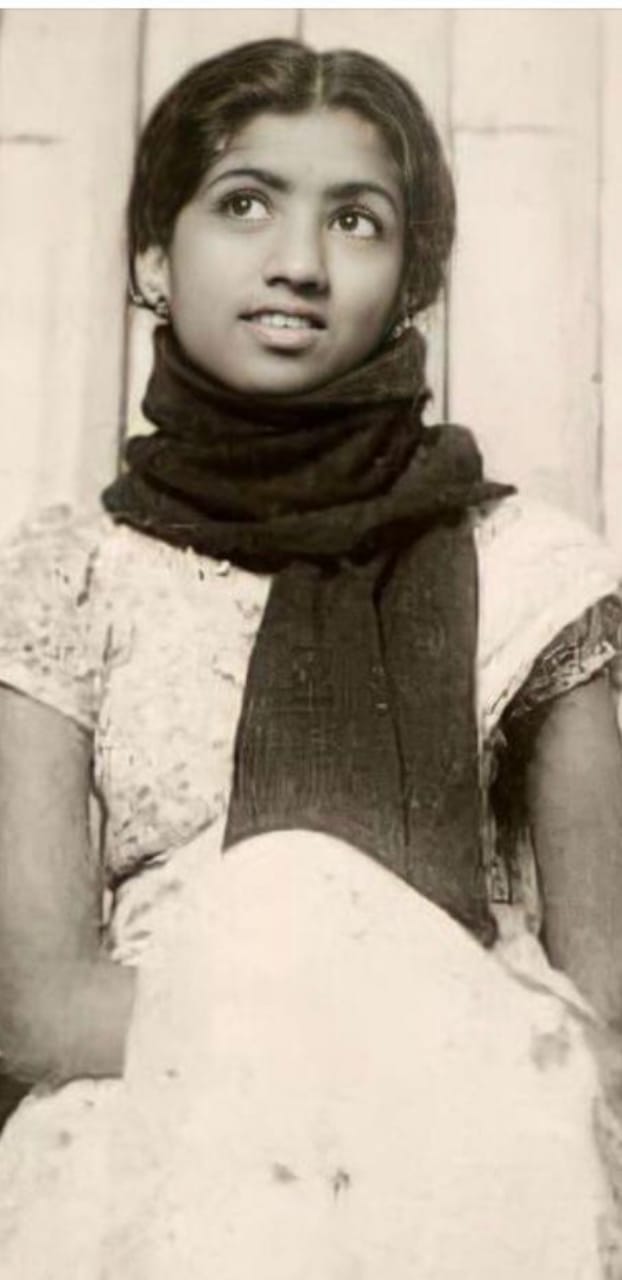

Ruk Jaao Banwaasi Ram
Film: Sampoorna Ramayan
Year: 1961
Composer: Vasant Desai
Raaga: Puriya Dhanashree
The time of the sunset sandhi-prakash evokes very special moods in the Indian ethos. So it is hardly surprising that this time is adorned by rich and beautiful melodies. One of the prime raags of this time is Marwa. In raag music the uttarang of the saptak is usually supported below by a shuddha m or P. Both these notes are highly consonant with the shadja and therefore provide a resolution of tension even when komal or teevra (i.e. dissonant) notes are used. Marwa is among the raags in which both these notes are absent. This makes it especially suitable for evoking feelings of angst, longing, wistfulness, restlessness. The komal r is very prominent and is applied with a special intonation in Marwa. Some musicians use the imagery of komal r standing guard in front of the shadja, referring to the sparing use of S, preferring to drop down to the mandra D.
One of the masters of Marwa was undoubtedly Amir Khan sahab. He sang it often and well, and this original studio recording illustrates his command over the raag.(Watch on Youtube) The bandish ‘piya more anant des’ is originally a drut teentaal cheez (sung by Mallikarjun-bua for instance) but Khansahab has modified and adapted it for vilambit jhumra.
Marwa is notoriously hard to play on an instrument like the sarod. The strings are typically tuned to m S ‘P ‘S so there are two open strings with varjit notes. It takes the wizardry of somebody like Ali Akbar Khan Sahab to navigate this maze with such elegance. In this recording, the tabla sangat is by Mahapurush Mishra. It is a masterclass in accompaniment - clean, understated, complementary and yet spontaneous and creative. (Watch on Youtube).
The Saaz aur Awaz song ‘payaliya baawari baje’ is based on Marwa. It uses a bandish-like template and has a bunch of signature Lata taans in the composition, and ends in a taan up to the taar shadja. A very satisfactory and somewhat rare film representative of the raag. (Watch on Youtube).
There is an unfinished movie named Amar Samadhi from the 1950s. Vasant Desai roped in Salamat Ali Khan sahab to sing some bandishes with Lata. It is fantastic to hear Lata at her peak juxtaposed with one of the masters of his generation. In the Marwa bandish ‘tum bin mohe’ (third one in this clip) Lata got the intonation just right - no mean feat. (Watch on Youtube).
Last, and certainly not the least, in the Marwa bouquet is the lovely K. Mahavir composition ‘saanjh bhayi ghar aaja’. The harkats on ‘saanjh’ are delectable, and represent the core aesthetic of this song. The choice of the raag to represent virah is apt, and Lata uses the notes for the subtle emotions required. (Watch on Youtube).
There is no better illustration of the sophistication of raag conception than the fact that two other major raags share the notes of Marwa, viz. Puriya and Sohni. This shows that a raag is much more than a scale or combination of notes. That these three raags have strong and distinct identities is a source of limitless wonder for me. When Puriya is combined with the Kalyan raagang we get the highly evocative Puriya Kalyan. There are many classical renditions of this raag. This short piece by Nusrat Fateh Ali Khan is impressive. (Watch on Youtube).
Lata has sung a most beautiful Marathi song- 'Haravale te gavasale kaa' based on this raag. Full marks to Vasant Prabhu for the sensitive composition, and for coaxing that special voice from Lata. The mukhada itself straddles the madhya shadja, in keeping with the mood of the song. The effect is stunning (Watch on Youtube).
There is another motherlode of melodies in the Purvi group (or thaaT) that also belongs to the same time of the day. The lead raag Purvi is itself replete with emotive potential, as are other raags like Shree sung at this time of the day. The most popular raag from this cluster turned out to be Puriya Dhanashree. It is sung by all gharanas and many great renditions exist. The redoubtable Ghulam Mustafa Khan of Rampur-Sahaswan gharana, who sadly left us recently, has sung it beautifully here. (Watch on Youtube). I can’t resist sharing the same vilambit khayal ‘ab to rut maan’ in the voice of D.V.Paluskar. The drut ceez he sings ‘payaliya jhankar’ is also favored by musicians across gharana boundaries. (Watch on Youtube).
On the non-classical front, Farida Khanum’s lingering notes based on this raag do justice to the poetry (Watch on Youtube) and this brief clip by Noorjehan is tantalizing. (Watch on Youtube).
One Lata song is ‘meri sanson ko jo mehka rahi hai’ that bucks the trend a little by using Puriya Dhanashree for a soft romantic theme. The composition holds up and Lata’s singing is good given the timeframe and she handles the pauses and avarohi meends especially well (Watch on Youtube).
Vasant Desai chose to use Puriya Dhanashree to express the pain of separation, when Ram is leaving Ayodhya for the forest. The dramatic chorus of ‘ruk jaao’ followed by the anguished ‘more raam’ in the taar saptak - with which Lata enters the song - is one of the kernels of this song, both in the cinematic and the musical context and it is heart-rending. The rest of the song, by contrast, follows the dejection-wistfulness axis. The very first mukhada ‘pyaasi akhiyan tumhe.n pukare.n’ especially the short avarohi taan followed by the aarohi arc on the last word is breathtaking. The lone brief taan in the first antara leaves you wanting more. And the cutting off of breath at each ‘ruk jaao’ reminds us of the importance of negative spaces in art. Lata switches between anguish and resignation very well in this song. A sad, beautiful melody!
Author info is not available!